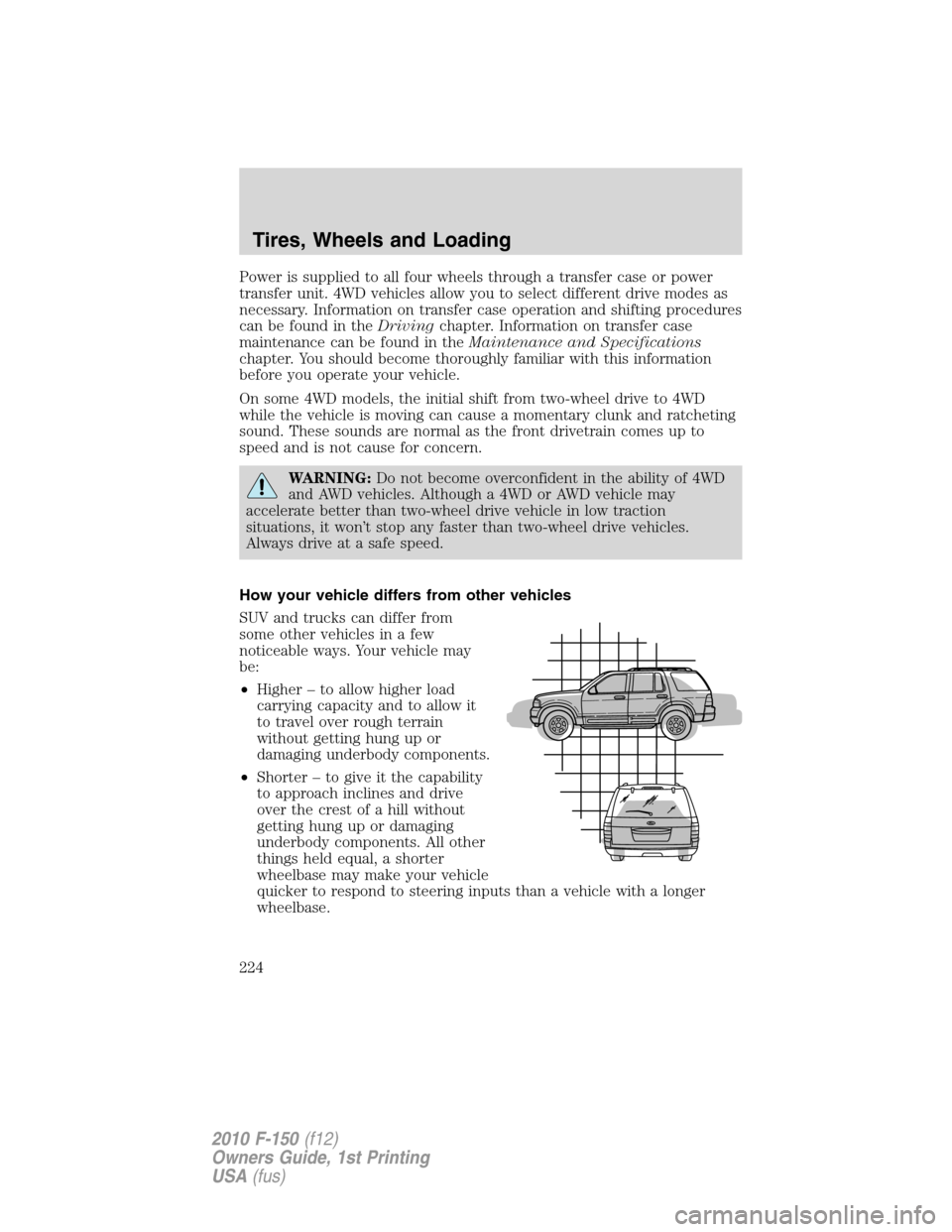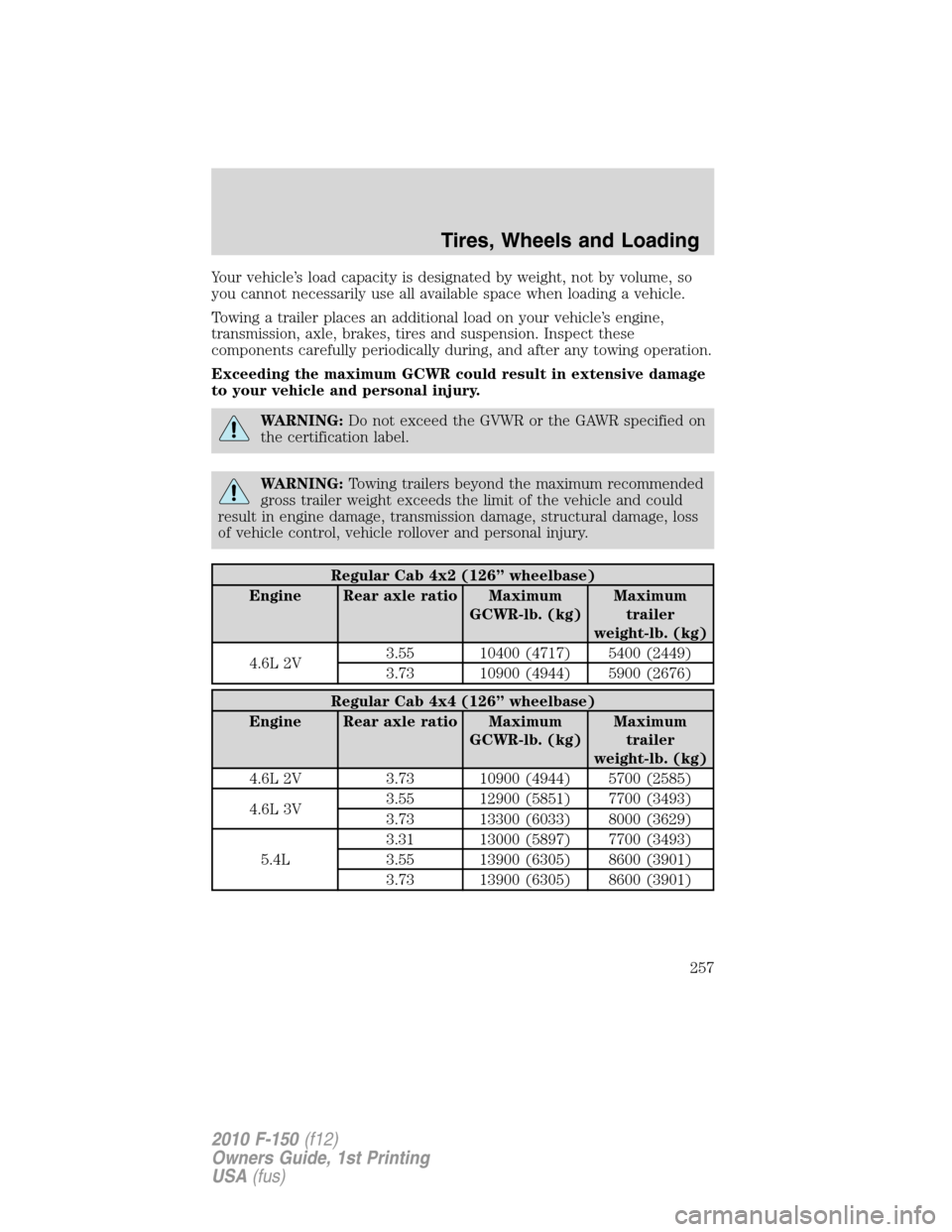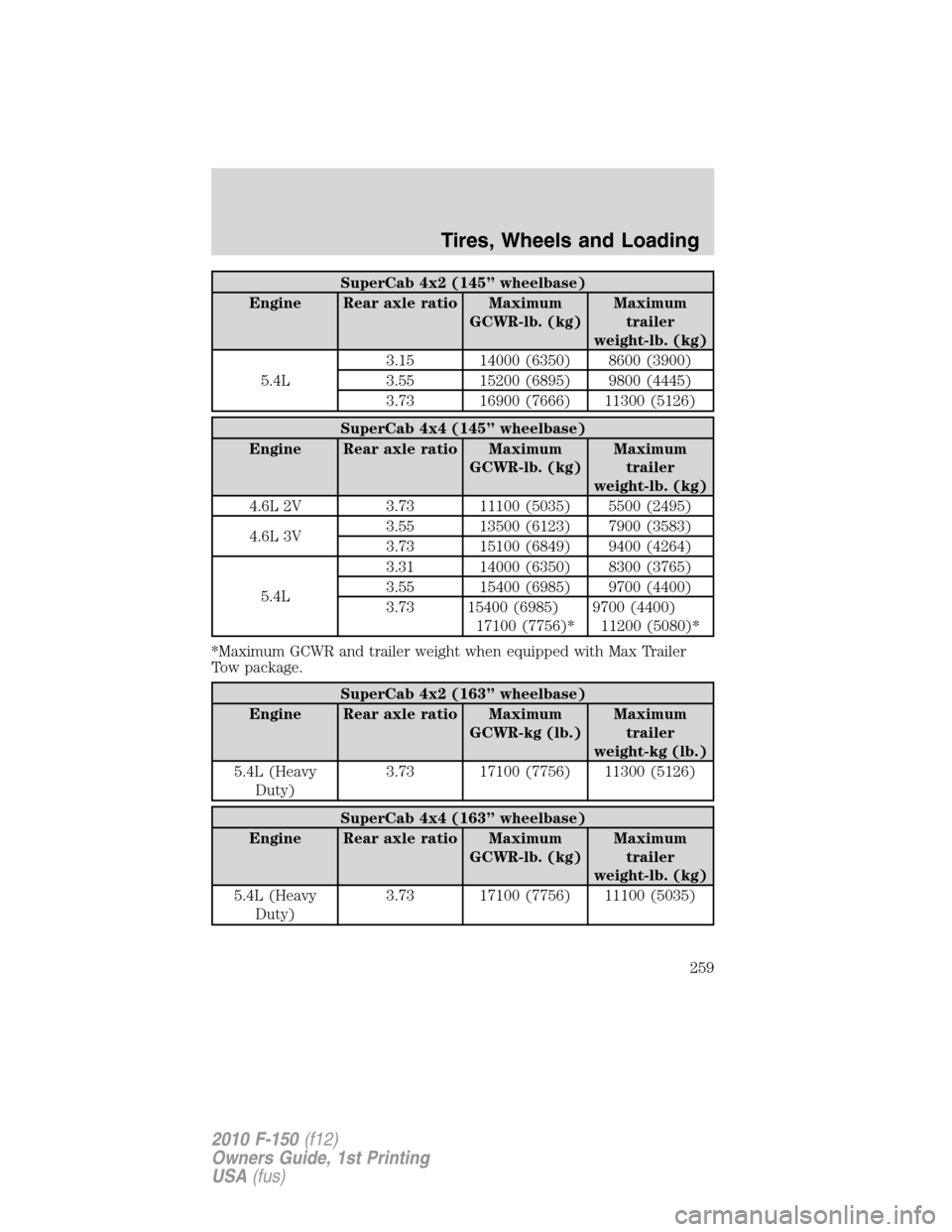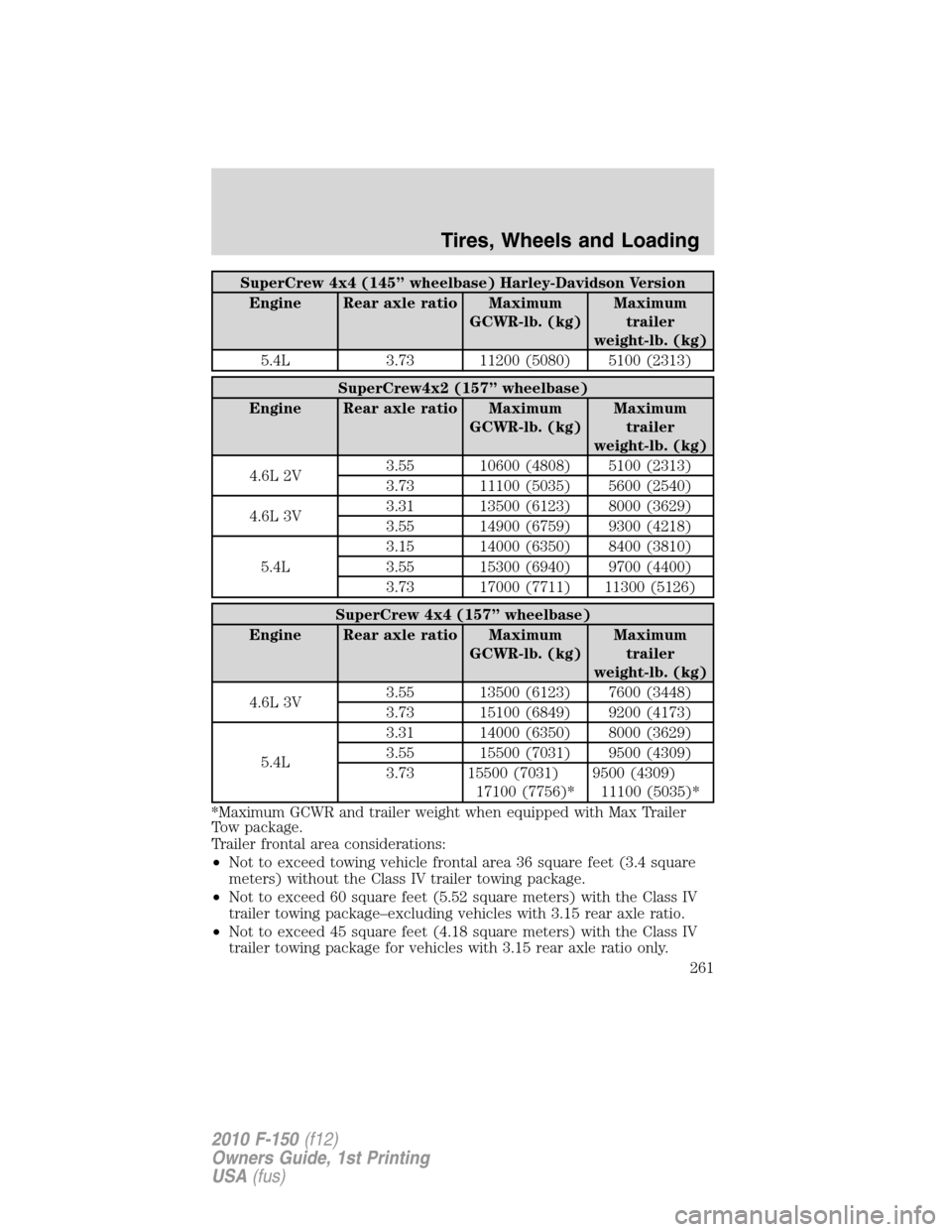Page 224 of 419

Power is supplied to all four wheels through a transfer case or power
transfer unit. 4WD vehicles allow you to select different drive modes as
necessary. Information on transfer case operation and shifting procedures
can be found in theDrivingchapter. Information on transfer case
maintenance can be found in theMaintenance and Specifications
chapter. You should become thoroughly familiar with this information
before you operate your vehicle.
On some 4WD models, the initial shift from two-wheel drive to 4WD
while the vehicle is moving can cause a momentary clunk and ratcheting
sound. These sounds are normal as the front drivetrain comes up to
speed and is not cause for concern.
WARNING:Do not become overconfident in the ability of 4WD
and AWD vehicles. Although a 4WD or AWD vehicle may
accelerate better than two-wheel drive vehicle in low traction
situations, it won’t stop any faster than two-wheel drive vehicles.
Always drive at a safe speed.
How your vehicle differs from other vehicles
SUV and trucks can differ from
some other vehicles in a few
noticeable ways. Your vehicle may
be:
•Higher – to allow higher load
carrying capacity and to allow it
to travel over rough terrain
without getting hung up or
damaging underbody components.
•Shorter – to give it the capability
to approach inclines and drive
over the crest of a hill without
getting hung up or damaging
underbody components. All other
things held equal, a shorter
wheelbase may make your vehicle
quicker to respond to steering inputs than a vehicle with a longer
wheelbase.
Tires, Wheels and Loading
224
2010 F-150(f12)
Owners Guide, 1st Printing
USA(fus)
Page 257 of 419

Your vehicle’s load capacity is designated by weight, not by volume, so
you cannot necessarily use all available space when loading a vehicle.
Towing a trailer places an additional load on your vehicle’s engine,
transmission, axle, brakes, tires and suspension. Inspect these
components carefully periodically during, and after any towing operation.
Exceeding the maximum GCWR could result in extensive damage
to your vehicle and personal injury.
WARNING:Do not exceed the GVWR or the GAWR specified on
the certification label.
WARNING:Towing trailers beyond the maximum recommended
gross trailer weight exceeds the limit of the vehicle and could
result in engine damage, transmission damage, structural damage, loss
of vehicle control, vehicle rollover and personal injury.
Regular Cab 4x2 (126” wheelbase)
Engine Rear axle ratio Maximum
GCWR-lb. (kg)Maximum
trailer
weight-lb. (kg)
4.6L 2V3.55 10400 (4717) 5400 (2449)
3.73 10900 (4944) 5900 (2676)
Regular Cab 4x4 (126” wheelbase)
Engine Rear axle ratio Maximum
GCWR-lb. (kg)Maximum
trailer
weight-lb. (kg)
4.6L 2V 3.73 10900 (4944) 5700 (2585)
4.6L 3V3.55 12900 (5851) 7700 (3493)
3.73 13300 (6033) 8000 (3629)
5.4L3.31 13000 (5897) 7700 (3493)
3.55 13900 (6305) 8600 (3901)
3.73 13900 (6305) 8600 (3901)
Tires, Wheels and Loading
257
2010 F-150(f12)
Owners Guide, 1st Printing
USA(fus)
Page 258 of 419

Regular Cab 4x2 (145” wheelbase)
Engine Rear axle ratio Maximum
GCWR-lb. (kg)Maximum
trailer
weight-lb. (kg)
4.6L 2V3.55 10600 (4808) 5500 (2495)
3.73 11100 (5035) 6000 (2722)
4.6L 3V3.31 13100 (5942) 8000 (3629)
3.55 13600 (6169) 8400 (3810)
5.4L3.15 13200 (5987) 8000 (3629)
3.55 15000 (6804) 9800 (4445)
5.4L (Heavy
Duty)3.73 16700 (7575) 11300 (5126)
Regular Cab 4x4 (145” wheelbase)
Engine Rear axle ratio Maximum
GCWR-lb. (kg)Maximum
trailer
weight-lb. (kg)
4.6L 2V 3.73 11100 (5035) 5800 (2631)
4.6L 3V3.55 13100 (5942) 7700 (3493)
3.73 13600 (6169) 8200 (3719)
5.4L3.31 13200 (5987) 7700 (3493)
3.55 15000 (6804) 9500 (4309)
3.73 15000 (6804) 9500 (4309)
5.4L (Heavy
Duty)3.73 17000 (7711) 11300 (5126)
SuperCab 4x2 (145” wheelbase)
Engine Rear axle ratio Maximum
GCWR-lb. (kg)Maximum
trailer
weight-lb. (kg)
4.6L 2V3.55 10600 (4808) 5300 (2404)
3.73 11100 (5035) 5800 (2631)
4.6L 3V3.31 13500 (6123) 8100 (3674)
3.55 14900 (6759) 9500 (4309)
Tires, Wheels and Loading
258
2010 F-150(f12)
Owners Guide, 1st Printing
USA(fus)
Page 259 of 419

SuperCab 4x2 (145” wheelbase)
Engine Rear axle ratio Maximum
GCWR-lb. (kg)Maximum
trailer
weight-lb. (kg)
5.4L3.15 14000 (6350) 8600 (3900)
3.55 15200 (6895) 9800 (4445)
3.73 16900 (7666) 11300 (5126)
SuperCab 4x4 (145” wheelbase)
Engine Rear axle ratio Maximum
GCWR-lb. (kg)Maximum
trailer
weight-lb. (kg)
4.6L 2V 3.73 11100 (5035) 5500 (2495)
4.6L 3V3.55 13500 (6123) 7900 (3583)
3.73 15100 (6849) 9400 (4264)
5.4L3.31 14000 (6350) 8300 (3765)
3.55 15400 (6985) 9700 (4400)
3.73 15400 (6985)
17100 (7756)*9700 (4400)
11200 (5080)*
*Maximum GCWR and trailer weight when equipped with Max Trailer
Tow package.
SuperCab 4x2 (163” wheelbase)
Engine Rear axle ratio Maximum
GCWR-kg (lb.)Maximum
trailer
weight-kg (lb.)
5.4L (Heavy
Duty)3.73 17100 (7756) 11300 (5126)
SuperCab 4x4 (163” wheelbase)
Engine Rear axle ratio Maximum
GCWR-lb. (kg)Maximum
trailer
weight-lb. (kg)
5.4L (Heavy
Duty)3.73 17100 (7756) 11100 (5035)
Tires, Wheels and Loading
259
2010 F-150(f12)
Owners Guide, 1st Printing
USA(fus)
Page 260 of 419
SuperCrew 4x2 (145” wheelbase)
Engine Rear axle ratio Maximum
GCWR-lb. (kg)Maximum
trailer
weight-lb. (kg)
4.6L 2V3.55 10600 (4808) 5200 (2359)
3.73 11100 (5035) 5700 (2585)
4.6L 3V3.15 13000 (5897) 7500 (3402)
3.31 13500 (6123) 8100 (3674)
3.55 14900 (6759) 9400 (4264)
5.4L3.15 14000 (6350) 8500 (3856)
3.55 15300 (6940) 9800 (4445)
3.73 16900 (7666) 11300 (5126)
SuperCrew 4x2 (145” wheelbase) Harley-Davidson Version
Engine Rear axle ratio Maximum
GCWR-lb. (kg)Maximum
trailer
weight-lb. (kg)
5.4L 3.73 11200 (5080) 5300 (2404)
SuperCrew 4x4 (145” wheelbase)
Engine Rear axle ratio Maximum
GCWR-lb. (kg)Maximum
trailer
weight-lb. (kg)
4.6L 3V3.55 13500 (6123) 7700 (3493)
3.73 15100 (6849) 9300 (4218)
5.4L3.31 14000 (6350) 8100 (3674)
3.55 15500 (7031) 9600 (4355)
3.73 15500 (7031)
17100 (7756)*9600 (4355)
11200 (5080)*
*Maximum GCWR and trailer weight when equipped with Max Trailer
Tow package.
Tires, Wheels and Loading
260
2010 F-150(f12)
Owners Guide, 1st Printing
USA(fus)
Page 261 of 419

SuperCrew 4x4 (145” wheelbase) Harley-Davidson Version
Engine Rear axle ratio Maximum
GCWR-lb. (kg)Maximum
trailer
weight-lb. (kg)
5.4L 3.73 11200 (5080) 5100 (2313)
SuperCrew4x2 (157” wheelbase)
Engine Rear axle ratio Maximum
GCWR-lb. (kg)Maximum
trailer
weight-lb. (kg)
4.6L 2V3.55 10600 (4808) 5100 (2313)
3.73 11100 (5035) 5600 (2540)
4.6L 3V3.31 13500 (6123) 8000 (3629)
3.55 14900 (6759) 9300 (4218)
5.4L3.15 14000 (6350) 8400 (3810)
3.55 15300 (6940) 9700 (4400)
3.73 17000 (7711) 11300 (5126)
SuperCrew 4x4 (157” wheelbase)
Engine Rear axle ratio Maximum
GCWR-lb. (kg)Maximum
trailer
weight-lb. (kg)
4.6L 3V3.55 13500 (6123) 7600 (3448)
3.73 15100 (6849) 9200 (4173)
5.4L3.31 14000 (6350) 8000 (3629)
3.55 15500 (7031) 9500 (4309)
3.73 15500 (7031)
17100 (7756)*9500 (4309)
11100 (5035)*
*Maximum GCWR and trailer weight when equipped with Max Trailer
Tow package.
Trailer frontal area considerations:
•Not to exceed towing vehicle frontal area 36 square feet (3.4 square
meters) without the Class IV trailer towing package.
•Not to exceed 60 square feet (5.52 square meters) with the Class IV
trailer towing package–excluding vehicles with 3.15 rear axle ratio.
•Not to exceed 45 square feet (4.18 square meters) with the Class IV
trailer towing package for vehicles with 3.15 rear axle ratio only.
Tires, Wheels and Loading
261
2010 F-150(f12)
Owners Guide, 1st Printing
USA(fus)